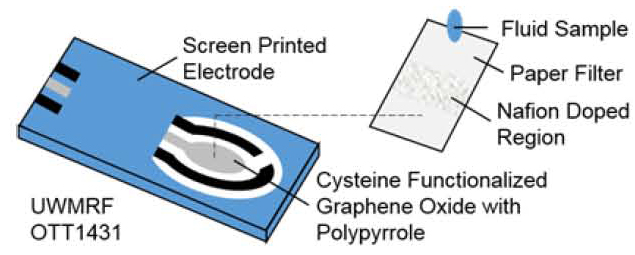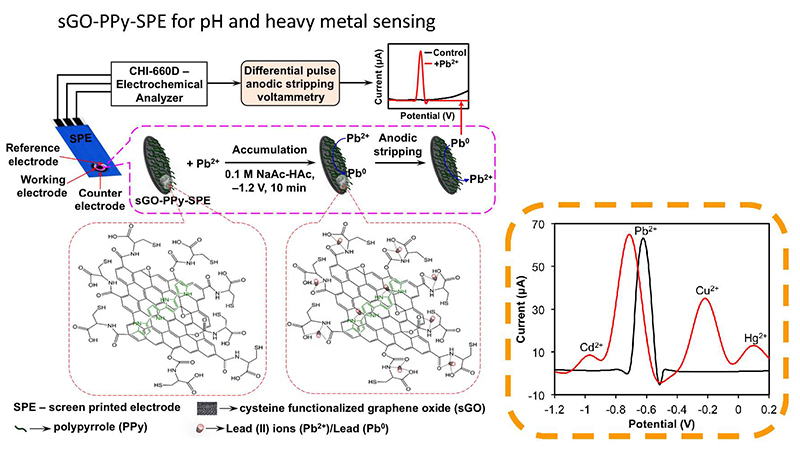
OTT1431
Applications
Heavy metal ion and pH sensing device.
Target Problems
Current analytical devices used to determine the heavy metal concentrations are expensive, bulky, require professional operators, and higher operation cost.
Key Benefits
- Long Term Stability – the materials of the nanocomposite are stable for multiple sample use
- Ultrahigh Sensitivity – the sGO/PPy nanocomposite film can detect lead below the 10 ppb limit for drinking water set by the WHO
- Inexpensive – the materials are easy to source and fabricate
- User Friendly – the device is portable, can be set up quickly, and is calibration-free
- Reliable – the results are highly reproducible
- Specific – multiple heavy metals can be analyzed in single run, and curves for the various heavy metals can be easily distinguished
- Low sample volume – very little liquid (10 μL or less) is needed to detect the heavy metal and pH content

Technology
This sensor utilizes a new electrode material that enables greater level of detection (0.07 ppb for Pb2+) for heavy metal ions. The electrode determines the pH independent from heavy metals, and the measured pH can be used to correct pH-heavy metal concentration-sensor measurement curves for determining accurate heavy metal concentrations regardless of the pH of the sample. This nanocomposite is highly stable and has ultrahigh sensitivity to detect lead at levels two orders of magnitude below the 10 ppb limit for drinking water set by the WHO. This sensor can be used for disposable one-time use, as well as long-term monitoring.
Intellectual Property
WO 2016/090176, CA2968888, CN107466367, IN201737019701, MX2017007193, US20170363572
This technology is available for non-exclusive licensing and is available for further research support in detection of additional metals.

